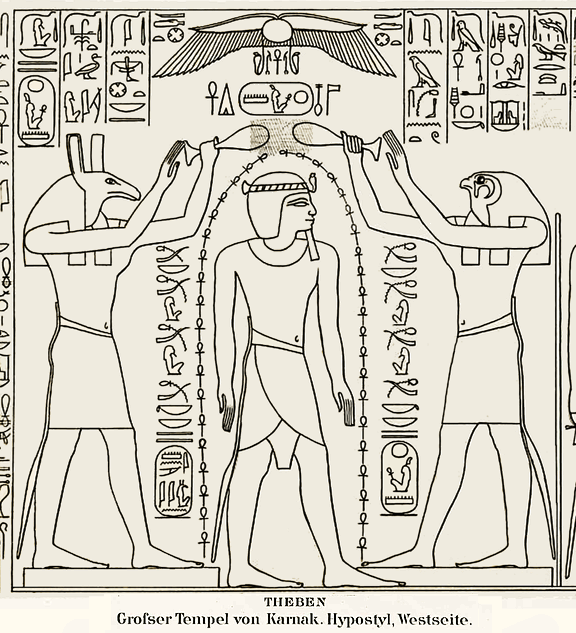
Cornice Block
Sandstone, A.D. 41-68, From Philae
Rogers Fund, 1911 (11.154.3)
|
|
|
From info card: "This block originally formed part of a screen wall that connected the four front columns and the sidewalls of the temple of Harendotes ('Horus the Avenger') on the island of Philae. The relief represents the 'Baptism of Pharoah,' a purification ritual that was part of Egyptian coronation ceremonies. The gods Horus (not preserved) and the ibis-headed Thoth poured water - here represnted by streams of ankh (life) and was (dominion) hieroglyphs - over the head of the king. The pharaoh whose head is partially preserved is a Claudian emperor most probably either Claudius or Nero." The baptism of the pharoah is a consistent theme throughout Egyptian history. In earlier dynasties the gods Set and Horus were the baptisers, and there are many examples of it. In addition to the one shown below from Karnak, there is one at Medinet Habu. |

|
Describing the Medinet Habu scene, William J. Murnane explains: "In the corner, on the east end of the north wall, the king stands between Horus and Seth (fig. 18): each god holds over the king's head a vase from which issue, not streams of water, but signs meaning 'life' and 'dominion,' and they recite a spell: "I have purified you with life, stability and dominion; your purification is the purification of Thoth [var. 'Dewen-anwy'] and vice-versa. "These gods are the masters of the four corners of the universe and the king both absorbs magical power from these quarters and extends his watchful regard towards them. This rite, which enabled the king to participate in ritual as a god, was perhaps performed in a little room that was built in this corner after the second court had been completed..." (From _United with Eternity: A Concise 'Guide to the Monuments of Medinet Habu_ by William J. Murnane, pages 26-27) |